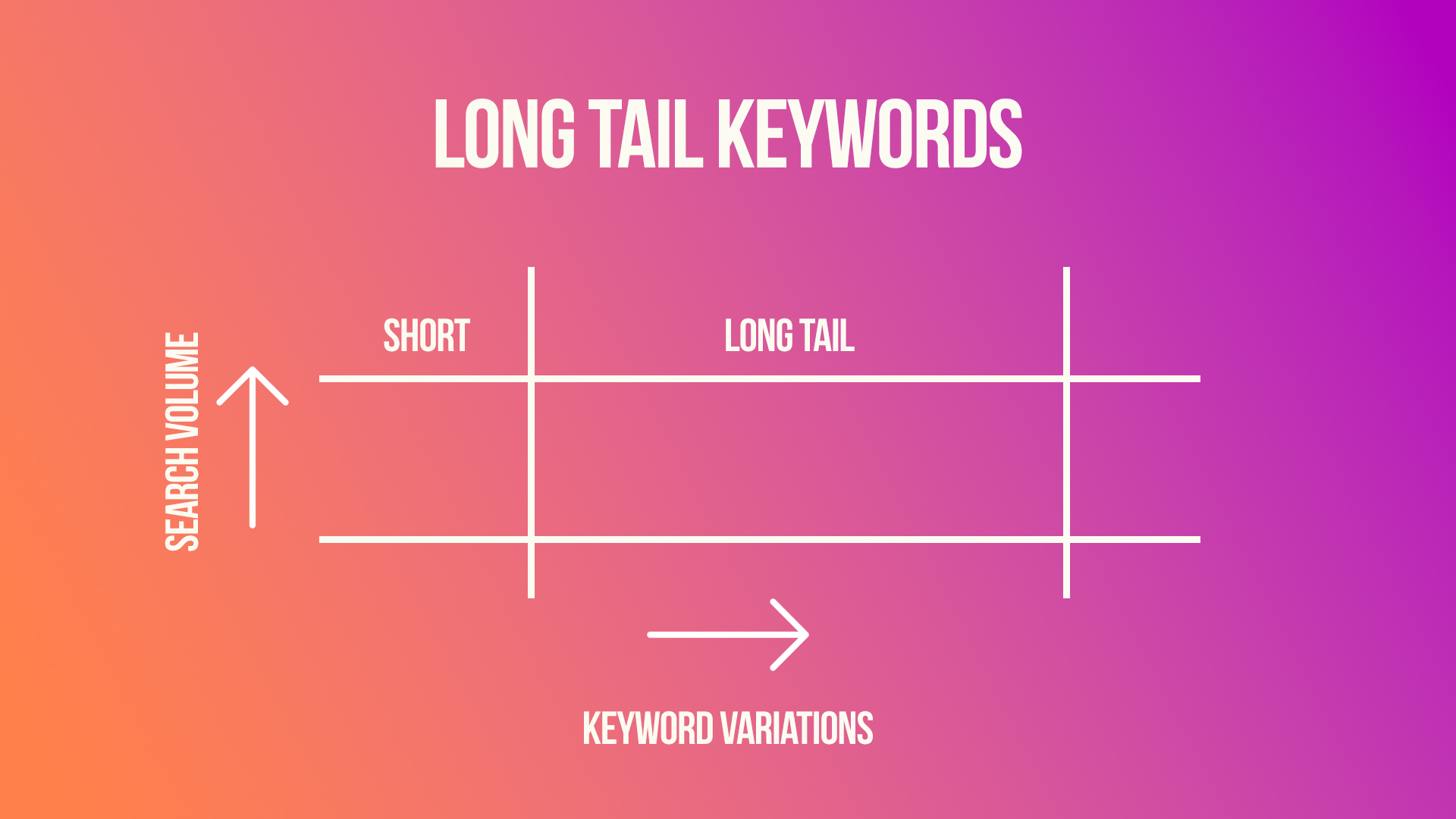The Benefits of Adding Long-Tail Keywords To Your SEO Content

Search Engine Optimization, commonly referred to as SEO, can be quite an intimidating topic for those who are unfamiliar with what it entails. Whether you are thinking about adding SEO to your marketing efforts, or simply want to add more content to your website, it’s important to know what long-tail keywords are and how to incorporate them correctly.
People are constantly searching for products and services that could benefit their lives, and your business could become discoverable just in time for their purchase. Continue reading to learn more about the benefits of adding long-tail keywords to your content:
What Are Long-Tail Keywords?

Long-tail keywords are specific phrases that tend to get a small number of searches per month. They are usually longer and more specific than head terms, which rank high in search engines. Long-tail keywords are fairly common when people use voice search, or for those who are getting closer to a point-of-purchase.
Less Competitive

Long-tail keywords are less competitive in search engine result pages than head terms, and have higher conversion rates. Instead of looking up a general head term like “sunglasses,” a long-tail keyword phrase would be “sunglasses for athletic women.” Long-tail keywords tend to have a lower Keyword Difficulty score. This means that you have a better chance at ranking in the top 10 for long-tail keywords with a low Keyword Difficulty score, than shooting for the head terms with a high Keyword Difficulty score.
Guide With Blog Content

If you want your website to rank on search engines, it’s crucial that you have fresh, relevant, and updated content on your website. By planning out blog content on a weekly basis, you can focus on the needs and interests of your target audience. Long-tail keywords are perfect for coming up with blog content that align with “how-to…” and “the best…” topic style. This is exactly what people would search when looking for specific information, and the long-tail keywords can be used in both the headline and body copy.
Advantageous for New Websites

Since all of the big brands and notable businesses are taking over the head terms on search engines, you may find it impossible to rank for the products or services you offer. This is where long-tail keywords can come to the rescue and help you become more discoverable. Google ranks web pages based on their Search Quality Rater Guidelines EAT principle: Expertise, authoritativeness, and trustworthiness. This feature also scans and considers the quality and relevance of the content on the site.
When industry leaders are dominating all of the high-competition keywords and have authority due to the implementation of backlinks, you can utilize long-tail keywords to be more relevant to your target audience. Including long-tail keywords in your content that are specific and targeted can create highly relevant content that answers the search phrases better than the competing pages. While you may not have the authority established as a new site, you can definitely assert expertise and trustworthiness with a strategic keyword plan to rank higher for those long-tail keywords.
Ideal for Voice Search

Think about all of the times you have asked Siri or Alexa a question… Do you say your search phrase out loud the same way you would when typing it out? Chances are, you use more conversational verbiage compared to when you take shortcuts to type out searches on your mobile device. According to research, nearly 41% of adults use voice search once a day. The people who use long-tail keywords in their searches have high intent and are more likely to convert.
Conclusion
Overall, optimizing your content for search engines takes some research and strategic planning. We recommend using a combination of long-tail keywords and head terms to increase your likelihood of ranking in search engines like Google, Bing, Yahoo, and more. Whether it’s for blog content, articles, or video headlines, consider adding long-tail keywords to your content that is specifically tailored to your product/service industry.